Manufacturer: MSI
UK price (as reviewed): MSRP £1,399.00
US price (as reviewed): MSRP TBC
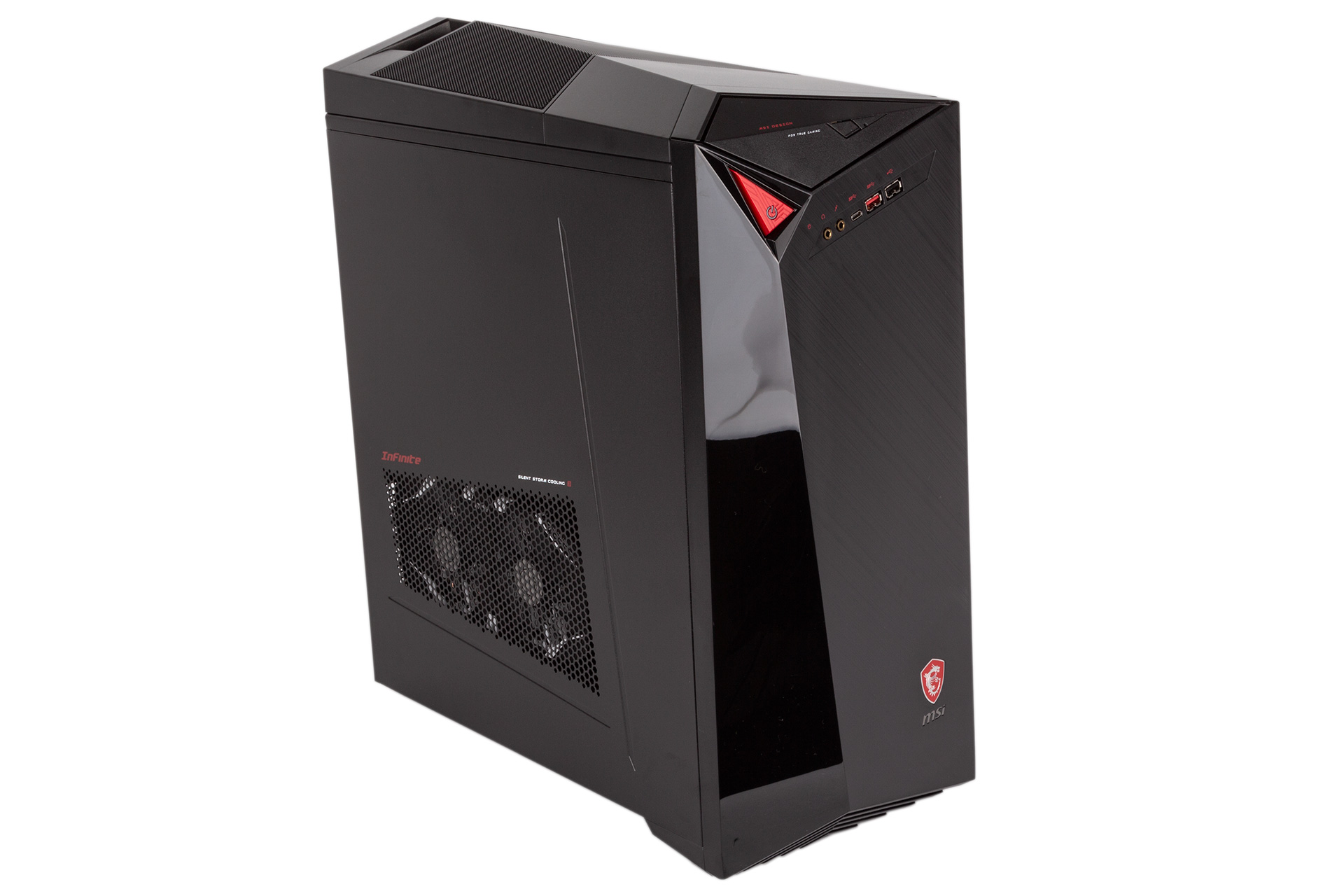
Desktop PCs have a habit of varying the exact specifications from region to region. For the UK, at least, MSI will be introducing two versions of the Infinite A 8th, one Core i7+ unit (our one here) and one Core i5+, retailing for £1,399 and £999 including VAT respectively and sold exclusively through Dixons Carphone outlets Currys and PC World. The ‘+’ you see there is not a typo but rather a branding exercise that indicates the inclusion of Intel Optane memory.
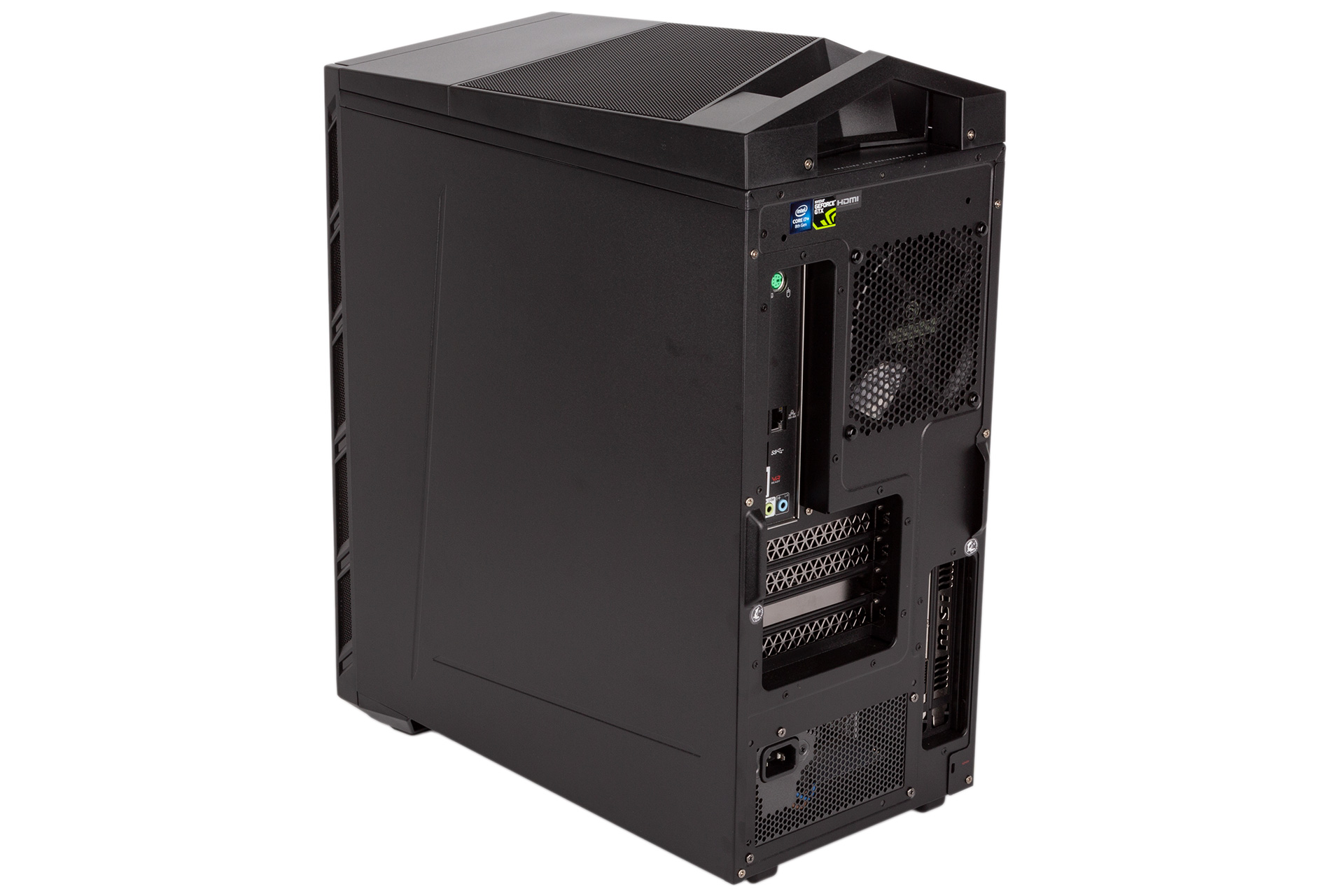
The Infinite A chassis has a bold design to say the least. The combination of red and black, angles, and sharp lines will certainly help it stand out in a retail environment, but we can’t help but feel that it wasn’t really designed with a UK audience primarily in mind. It’s constructed from steel with a good helping of plastic; build quality is only really on par with low to mid-range mid-towers. There’s a brushed metal finish on the front, integrated RGB lighting, and a built-in carry handle at the back which does its job well.
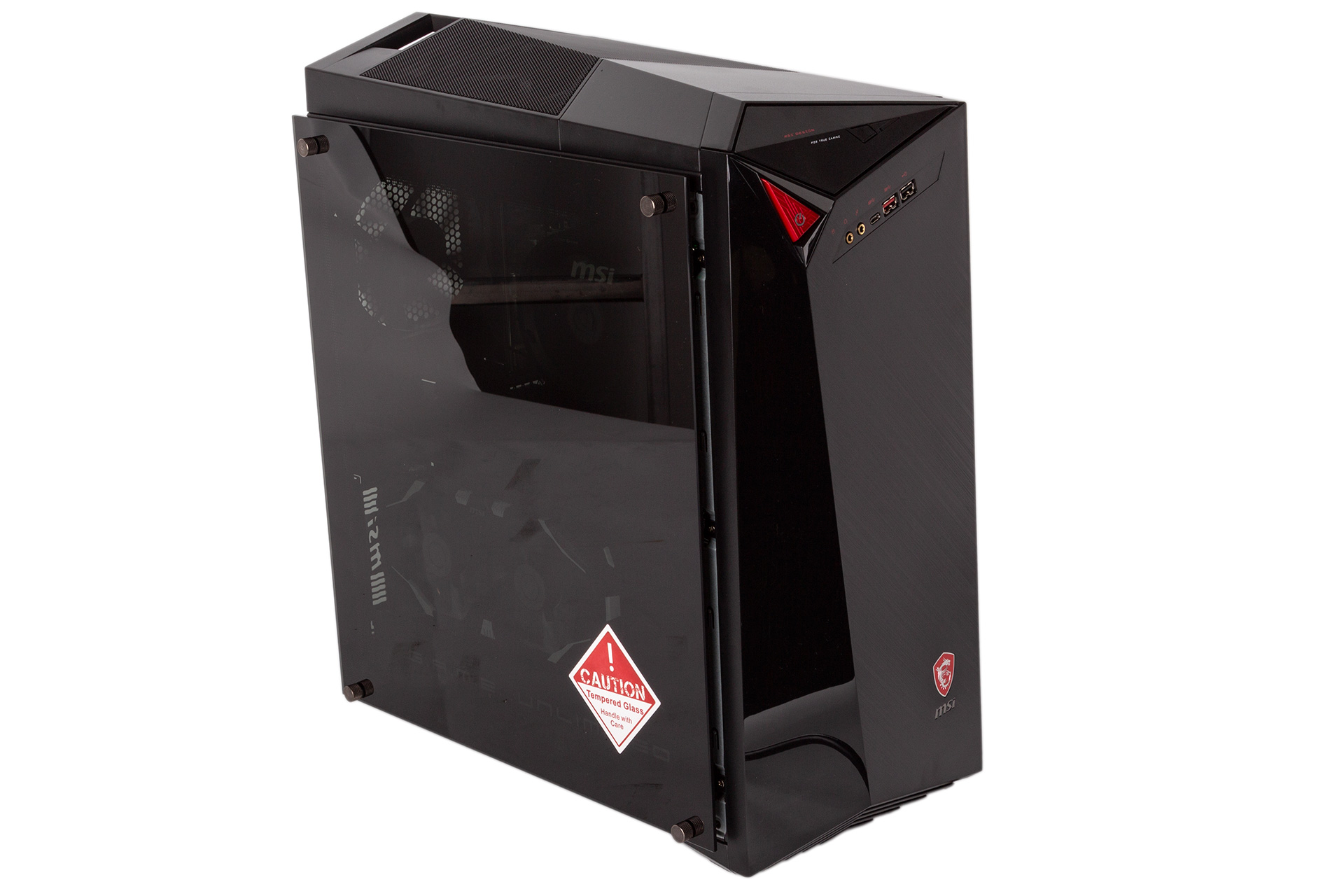
For the side panel, the PC ships with both a standard black steel one and a heavily tinted 4mm tempered glass replacement, for which you’ll need to install the necessary nuts. The former has built-in mesh and the latter leaves a gap between itself and the main chassis, so there will be at least some airflow for the vertical GPU in both instances. A dust filter is also supplied for the PSU, and users need to install this themselves – easily done thanks to the notches and magnets.
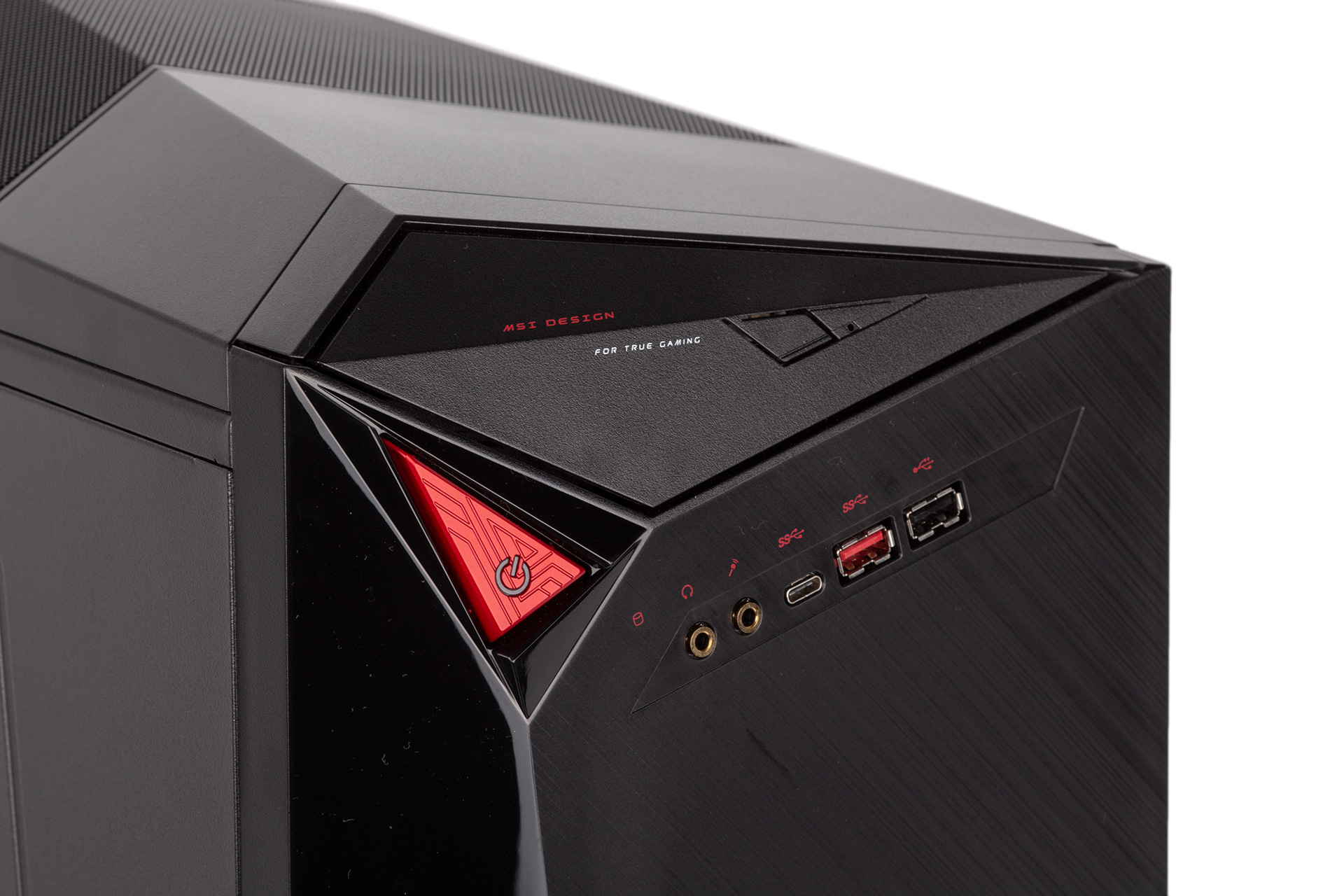
The front I/O panel includes one USB 3.0 and one USB 2.0, with Super Charger 2 supported on the latter – this just means automatic high-amp charging for phones and tablets. There’s also a Type-C port, which is a nice inclusion, but it’s limited to USB 3.0 (AKA USB 3.1 Gen 1) speeds. There’s even a slimline optical disk drive integrated into the top of the chassis.
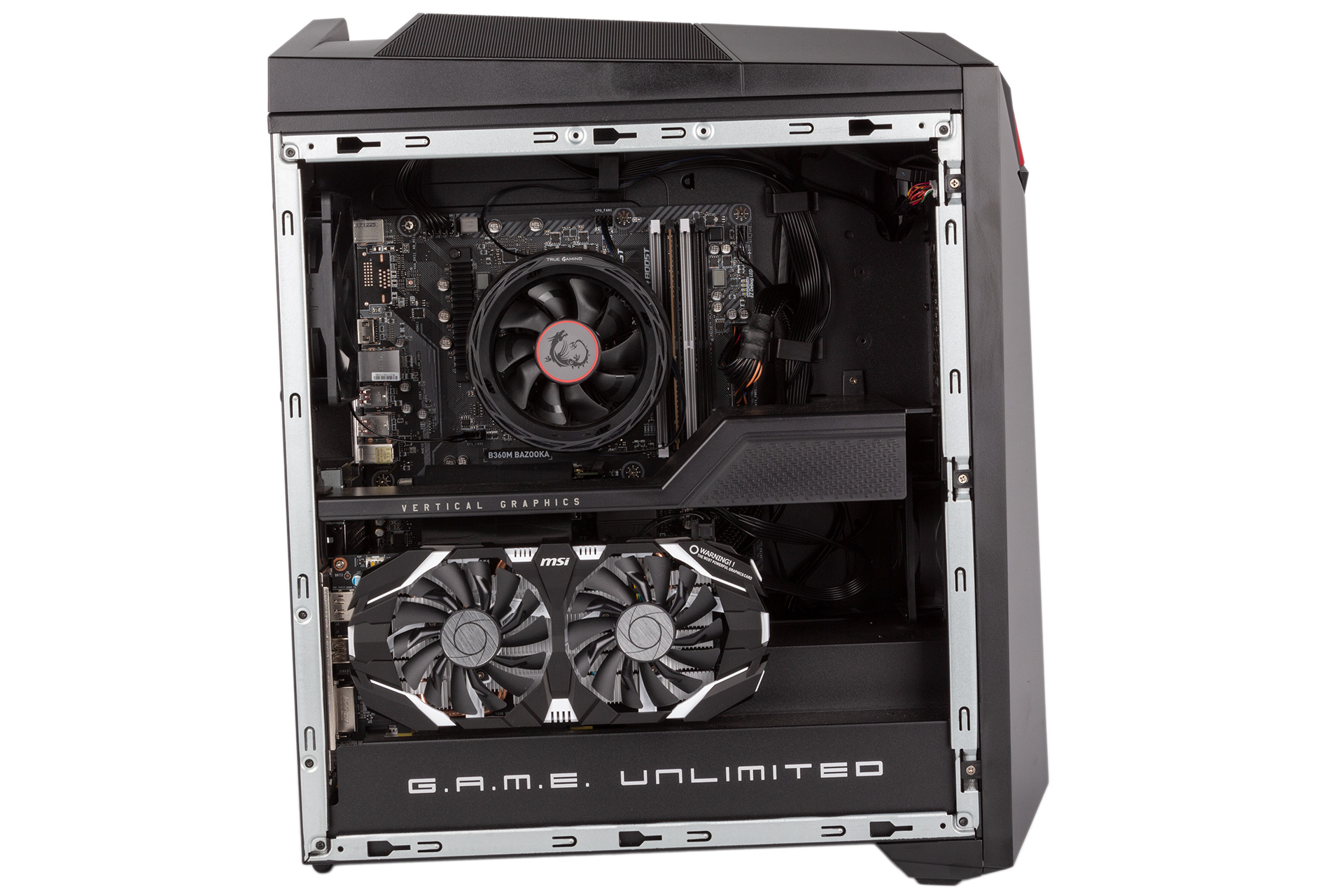
Taking a closer look at the hardware, we find MSI’s own micro-ATX B360M Bazooka motherboard. Chipsets lower than the overclocking-capable Z370 were slower to market (almost as if Coffee Lake was rushed to compete with AMD’s Ryzen offerings...), but they are valuable to budget-conscious buyers and system integrators alike. MSI is using the six-core, 12-thread Core i7-8700 here, so an overclocking motherboard isn’t necessary. Sadly, MSI has chosen single-channel DDR4, installing a very basic looking 2,400MHz DDR4 module. It’s also only 8GB, which feels limited today, so hopefully performance doesn’t take too big a hit.
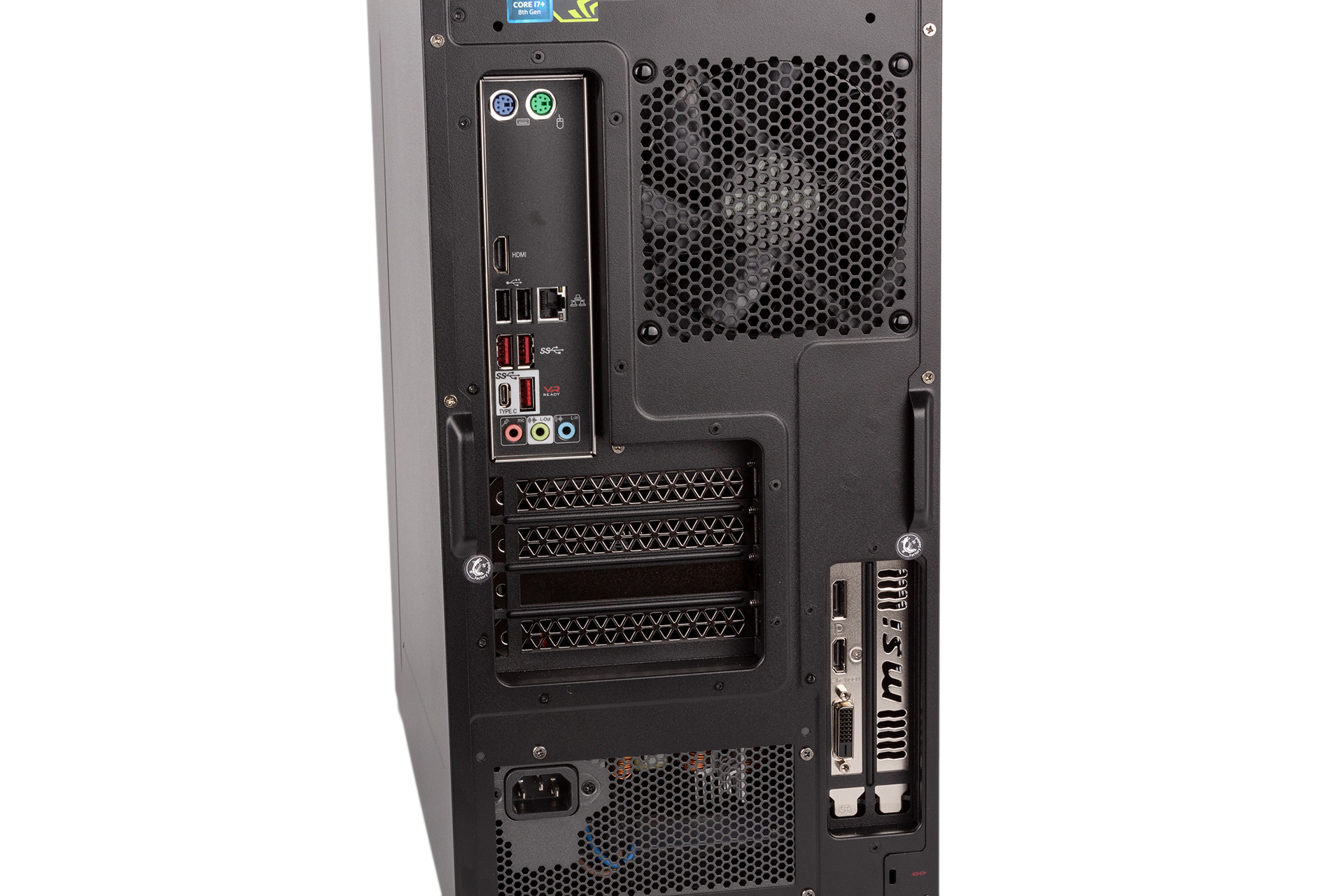
The board itself has two PS/2 ports, dual USB 2.0 connectors, and four USB 3.0 ports, one of which is a Type-C. The single LAN port is powered by a Realtek 8111H controller, and an Intel Wireless-AC 3168 dual-band 433Mbps module provides Wi-Fi and Bluetooth 4.2 connectivity via a PCIe add-in card.
For audio, the Realtek ALC887 Codec is sufficient, but we’d prefer to see ALC1220, and you get three 3.5mm jacks at the back. Nahimic 3 software complements the audio and is essentially software to help simulate 3D environments over stereo equipment – clearly applicable to gaming.
Kudos goes to MSI for not using a bog-standard reference card. Instead, you get the GTX 1060 6GB OCV2, factory-overclocked slightly on the core to 1,544MHz base and 1,759MHz boost. It’s a solid choice for 1080p gaming, and it’ll do okay at 1440p too. The custom cooler looks to be up to MSI’s usual high standards here, and the card nets you DVI-D, HDMI, and DisplayPort outputs. As mentioned, it’s mounted vertically so it can be seen through the side panel (it’s also more secure for transportation, an important consideration for a product like this).
The primary boot drive is a basic 128GB Transcend 2.5” SSD, secured to the rear of the motherboard tray. This is backed up by a 2TB Seagate Barracuda for bulk storage installed in a two-bay cage beneath the PSU shroud, but this comes with a twist, as the motherboard’s sole M.2 slot is occupied by a 16GB Intel Optane SSD, which is used to accelerate this secondary hard drive. It works by automatically caching frequently used files that benefit from the very rapid access times that Optane provides. We’ve seen it used with some success in other budget systems where the primary drive is a mechanical one, but this is the first system in our labs where the secondary volume is Optane-enabled.
The power supply is 80 Plus Bronze rated and non-modular. This sort of system doesn’t need anything more advanced than that, and the wattage is easily sufficient.

The chassis uses what MSI calls Silent Storm Cooling 3, which actually just means it has a triple-chamber design said to benefit airflow and cooling. The PSU is isolated by a shroud in the lower section, the CPU is found in the main chamber up top, and the vertically mounted GPU is separated by another shroud. CPU cooling comes courtesy of a custom downdraft air-cooler with an RGB-illuminated ring, and it’s supported by a 92mm front intake and 120mm rear exhaust, with both connected directly to motherboard headers for temperature-based speed control. There are, sadly, no dust filters on the front or on the roof, however.
The CPU cooler isn’t the only RGB-illuminated object. Inside the chassis is an LED strip along the top, although this only really benefits users with the tempered glass panel. Then there’s the external lighting that shines through the glossy black plastic section of the front panel, with a pattern that looks to be based on PCB traces. The lighting is all treated as a single entity in MSI’s Mystic Light control software. Most colours on the front panel come through nicely, but white is represented as a pretty nasty yellow-brown (maybe because of the plastic’s tint), so that’s best avoided.
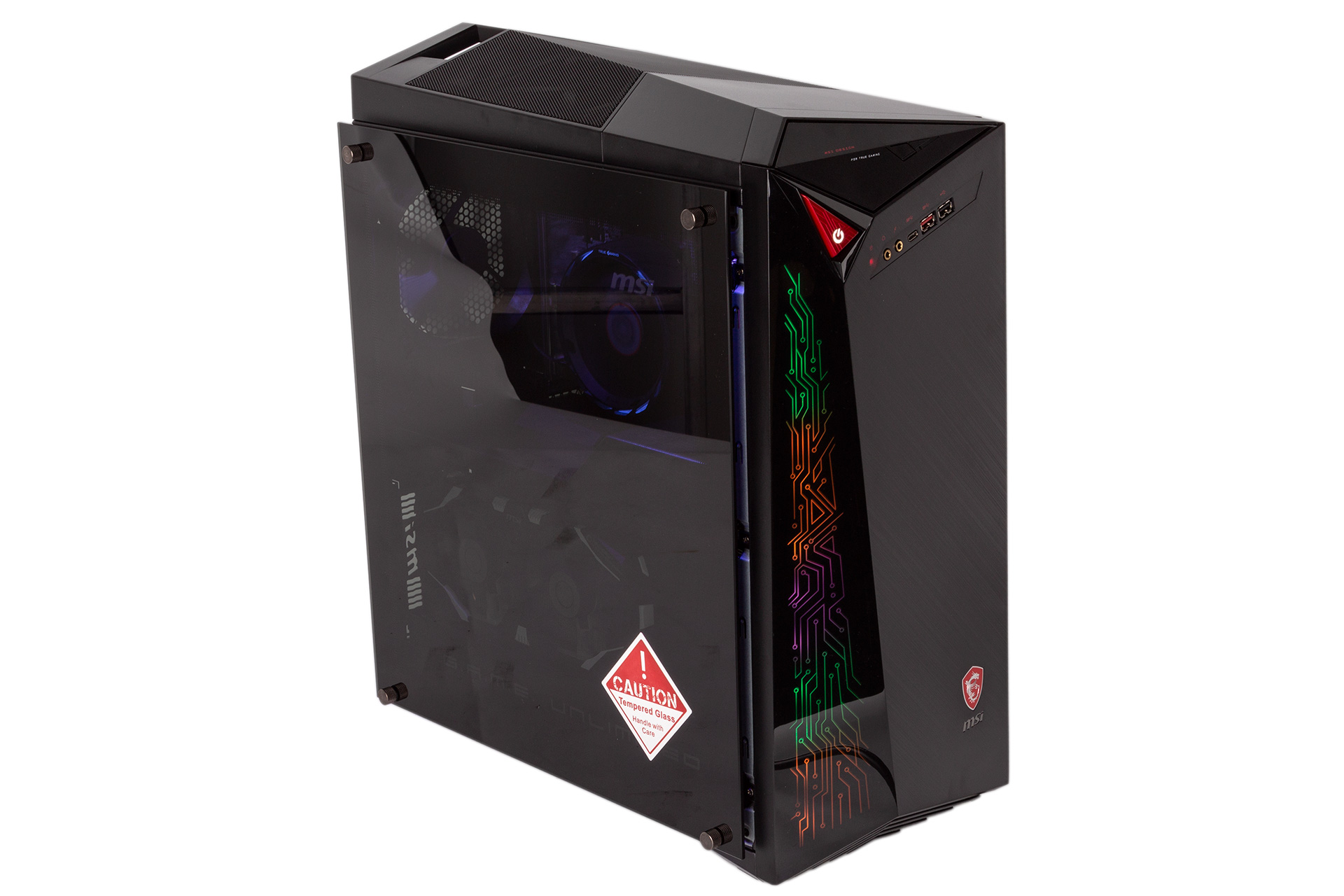
Anyone that’s comfortable upgrading their components in the first place shouldn’t really struggle to add memory, swap the drives, or change the graphics cards thanks to the accessibility of the chassis. Meanwhile, MSI’s cable routing can only really be described as acceptable – there’s nothing too messy, but things could easily be cleaner.
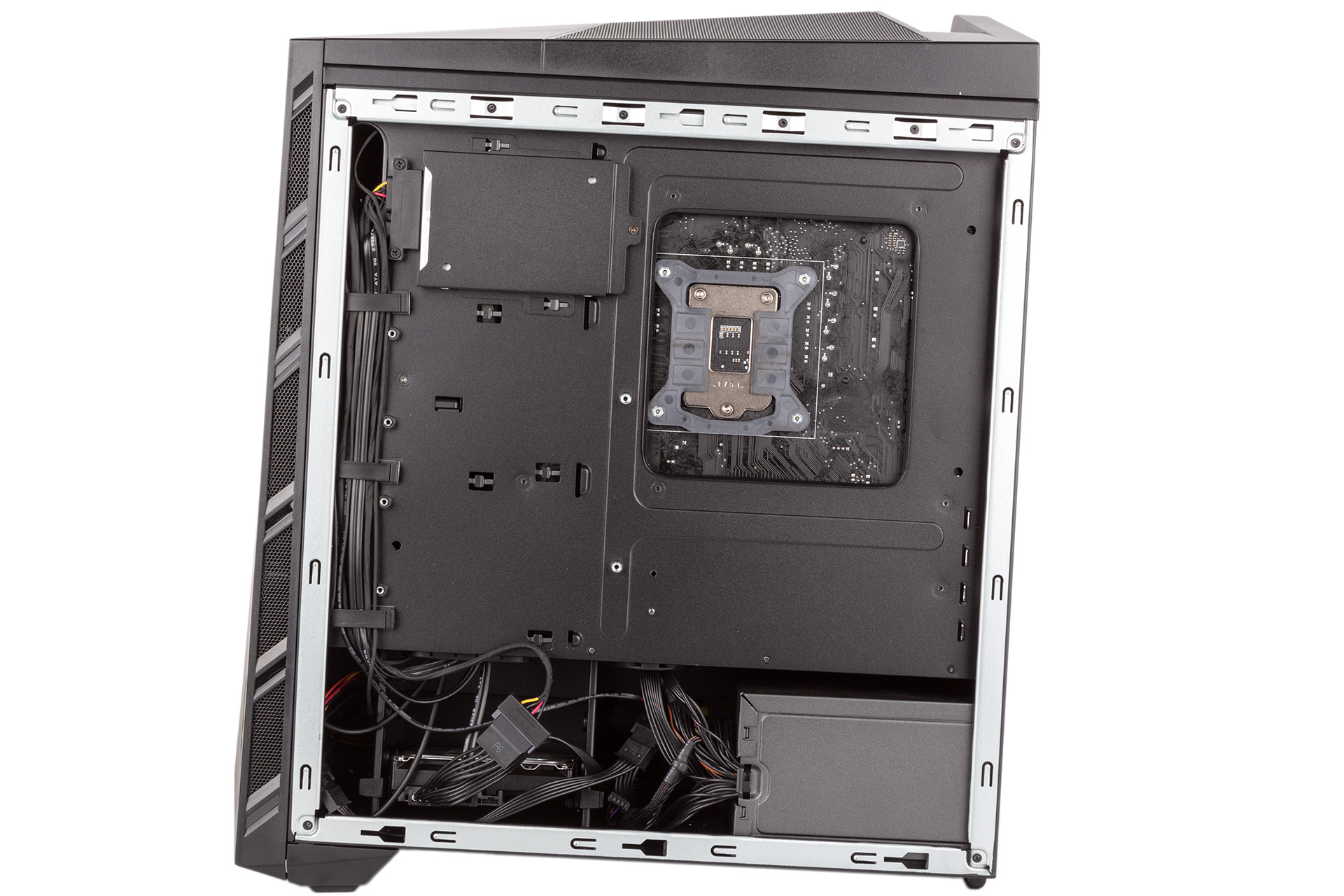
MSI’s BIOS is a pleasure to use, making it easy to navigate, update the firmware, and save/load profiles. It also has a pretty strong fan control suite if you want to tune the cooling.
Windows 10 Home comes loaded with quite a lot of software. Some of it is useful, but others only offer limited functions that you can do better elsewhere. Of note are Command Centre which brings the fan control into a Windows environment, and MysticLight for controlling the RGB lighting. Worse examples are things like PowerDVD, PowerDirector, and PhotoDirector, and a trial version of Norton. We would like to see a cleaner install really.
The MSI Infinite A 8th comes with a full two-year warranty, which is pretty decent for a full system.
Specifications (as reviewed)
- CPU Intel Core i7-8700
- CPU cores/threads Six/12
- Memory 8GB (1 x 8GB) 2,400MHz DDR4
- Graphics MSI GeForce GTX 1060 OCV2 (1 x DisplayPort 1.4, 1 x DL-DVI-D, 1 x HDMI 2.0b)
- Motherboard MSI B360M Bazooka
- Storage 1 x 128GB Transcend SSD230 2.5" SSD, 1 x 16GB Intel Optane SSD paired with 1 x 2TB Seagate Barracuda
- Case MSI Infinite chassis
- Dimensions (mm) 210 x 450 x 488 (W x D x H)
- Cooling MSI CPU air-cooler, 1 x 92mm front intake, 1 x 120mm rear exhaust
- PSU 550W (80 Plus Bronze, non-modular)
- Networking 1 x Gigabit LAN, Intel Wireless-AC 3168 433Mbps, Bluetooth 4.2
- Audio 5.1-channel HD audio (onboard) with Nahimic audio enhancer
- Operating system Windows 10 Home 64-bit
- Audio and USB Ports Rear: 1 x USB 3.0 Type-C, 3 x USB 3.0 Type-A, 2 x USB 2.0, 2 x PS/2, 3 x audio jacks; Front: 1 x USB 3.0 Type-C, 1 x USB 3.0 Type-A, 1 x USB 2.0, headphone, microphone
- Warranty Two years
- Extras Tempered glass replacement side panel

MSI MPG Velox 100R Chassis Review
October 14 2021 | 15:04

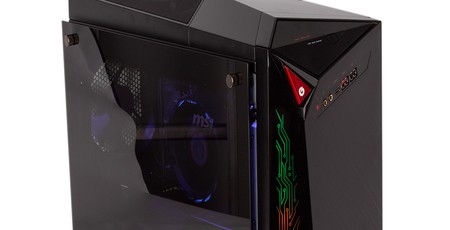
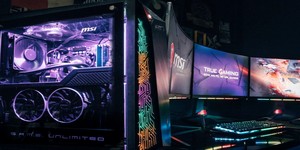




Want to comment? Please log in.